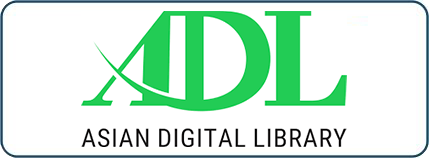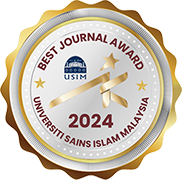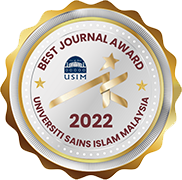HAK ASASI GOLONGAN RENTAN PASCA BENCANA ALAM
THE RIGHTS OF VULNERABLE PEOPLE POST-NATURAL DISASTER
DOI:
https://doi.org/10.33102/mjsl.vol9no2.325Keywords:
bencana alam, hak golongan rentan, pencabulan hak asasiAbstract
Natural disasters around the globe have affected humankind in many ways especially vulnerable people. Various kinds of disasters have exposed vulnerable people to multiple risks and hazards, depending on the factors. This article seeks to analyse violations of the rights of vulnerable people survivors of disasters. Through qualitative research, this study adopts descriptive methodology to explain the situation of vulnerable population affected by disaster and their rights under the law. This study shows that survivors of disasters experience rampant infringement of human rights due to negligence and mistreatment of the parties and the survivors’ own ignorance and lack of knowledge.
ABSTRAK
Bencana alam di seluruh dunia mengakibatkan banyak kesan negatif termasuk terhadap golongan rentan. Berbagai-bagai jenis bencana alam telah menyebabkan golongan ini terdedah kepada kemudaratan yang besar, bergantung kepada faktor-faktor tertentu. Artikel ini bertujuan untuk menganalisa pelanggaran hak asasi golongan rentan mangsa bencana alam. Menerusi kajian kualitatif, artikel ini menggunakan kaedah deskriptif untuk menerangkan keadaan kumpulan rentan yang terkesan disebabkan bencana serta hak mereka dalam undang-undang. Kajian ini menunjukkan bahawa mangsa yang terselamat dari bencana alam akan mengalami insiden pelanggaran hak asasi secara berleluasa disebabkan pengabaian, dan salah laku pihak berkaitan serta kejahilan mangsa.
Downloads
References
Abdul Rahim, N. F., Rosli, S. dan Ibrahim, R. (2016). Kelantan Siasat Mangsa Banjir Tercicir Bantuan Rumah. Berita Harian. 6 Disember 2016. <https://www.bharian.com.my/bhplus-old/2016/12/220677/kelantan-siasat-mangsa-banjir-tercicir-bantuan-rumah> Diakses 15 Mei 2020.
American Bar (2006). Human Rights and Natural Disaster: The Indian Ocean Tsunami <https://www.americanbar.org/publication/human_rights_magazine_home/human_rights_vol33_2006/fall2006/hr_fall06-lewis/
Badri, S. A., Asgary, A., Eftekhari, A. R., & Levy, J. (2006). Post disaster resettlement, development and change: a case study of the 1990 Manjil earthquake in Iran. Disasters, 30(4), 451-¬468.
Blaikie, P., Cannon, T. and Davis, I. and Wisner, B. (1994) At Risk: Natural Hazards, People’s Vulnerability and Disasters, London: Routledge.
Bradshaw, S. and Fordham, M. (2013) Women, Girls and Disasters: A review for DFID. <https://assets.publishing.service.gov.uk/government/uploads/system/uploads/attachment_data/file/236656/women-girls-disasters.pdf> Diakses pada 22 November 2018
Buromensky, M., Shturkhetsky, S., Beals, E., Kazanji, Z., Betz, M., & Schuepp, C. (2016). Conflict sensitive journalism: best practices and recommendations. Organisation for Security and Cooperation in Europe & International Media Support: Kyiv.
Buvinic, Mayra, and Nadia Youssef (1978). Women¬Headed Households: The Ignored Factor in Development Planning. Washington, D.C.: International Center for Research on Women.
Carnegie, A., Dolan, L.R. (2020). The effects of rejecting aid on recipients’ reputations: Evidence from natural disaster responses. Rev Int Organ. https://doi.org/10.1007/s11558-020-09393-y Diakses 12 Mei 2020
da Costa, K; Pospieszna, P. 2014. Finding the missing thread: The inclusion of a human rights-based approach in tackling climate change mitigation, adaptation and disaster risk reduction. United Nations Office for Disaster Risk Reduction (UNISDR)
Diaz, J. H. (2004). The public health impact of hurricanes and major flooding. The Journal of the Louisiana State Medical Society, 156(3), 145-¬150.
Gentner, H. H. (2006). ASEAN: Cooperative disaster relief after the tsunami. Südostasien aktuell : journal of current Southeast Asian affairs, 24(4), 3-9. <https://nbn-resolving.org/urn:nbn:de:0168-ssoar-339208> Diakses 12 Mei 2020.
Gist, R., and B. Lubin, eds. (1989). Psychosocial Aspects of Disaster. New York: Wiley.
Global Campaign for Free Expression (2005) Humanitarian Disasters And Information Rights. London: Article XIX Publication.
Hees R, Ahlendorf ML and Debere S. (2010) Transparency International. Preventing Corruption in Humanitarian Operation, Berlin.
Hossain, Mahabub (1988). Credit for Alleviation of Rural Poverty: The Grameen Bank in Bangladesh. Research Report 65. International Food Policy Research Institute in collaboration with the Bangladesh Institute of Development Studies.
Jeffery, S.E. (1982). The creation of vulnerability to natural disasters: case studies from the Dominican Republic. Disasters 6(1):38¬-43.
Johari. J & Marzuki. NA. (2013). Relating Stress, Anxiety and Depression among Flood Victims’Quality of Life in Malaysia: A Theoretical Perspective, International Journal of Social Science and Humanity, Vol. 3, No. 6, 543-547.
Konvensyen Antarabangsa Hak Ekonomi, Sosial dan Budaya, berkuatkuasa pada 3 Januari 1976.
Loi, E. (2018) Why Indonesia’s rules on foreign tsunami relief are rattling the aid sector. The New Humanitarian. <https://www.thenewhumanitarian.org/analysis/2018/10/16/why-indonesia-s-rules-foreign-tsunami-relief-are-rattling-aid-sector> Diakses 16 Mei 2020
Mahmud, Tanvir, and Prowse, M. (2012). “Corruption in Cyclone Preparedness and Relief Efforts in Coastal Bangladesh: Lesson for Climate Adaptation? Global Environmental Change 22 (4): 933- 43.
Matsuura, Y. (2006) Indian Ocean Tsunami and International Cooperation in East Asian Strategic Review 2006. The National Institute for Defense Studies: Japan. <http://www.nids.mod.go.jp/english/publication/east-asian/e2006.html> Diakses pada 2 Mei 2020.
McCarthy, J. (2021). Natural Disasters Displaced 3 Times as Many People as Conflict in 2020. Global Citizen <https://www.globalcitizen.org/en/content/natural-disaster-internally-displaced-persons-2020/> Diakses pada 15 Jun 2021.
McEntire, D. A. (1999). Issues in disaster relief: Progress, perpetual problems and prospective solutions. Journal of Disaster Prevention and Management, 8(5), 351-¬361.
Nicole Detraz & Dursun Peksen (2016). The Effect of IMF Programs on Women’s Economic and Political Rights, International Interactions, 42:1, 81-105, DOI: 10.1080/03050629.2015.1056343
Nicholls, S., Sykes, J. & Camilleri, P. (2010). The role of the media and communication in recovery from natural disasters: A case study of the Canberra 'firestorm' and its aftermath 2003-2007. Australian Journal of Communication, 37 (3), 33-50.
N.A. (2008). Human Rights and Natural Disasters. Brookings- Bern Project on Internal Displacement: Washington.
Norris et al. (2002). 60,000 Disaster Victims Speak: Part I. An Empirical Review of the Empirical Literature, 1981–2001. Psychiatry 65(3).
Nordin, R M et al. (2018). Opportunities for corruption across Flood Disaster Management (FDM). 8 IOP Conf. Ser.: Earth Environ. Sci. 117 012011.
OHCHR. (t.t) The right to housing in disasters and post- conflict settings. <https://www.ohchr.org/EN/Issues/Housing/Pages/DisasterPostConflictSettings.aspx> Diakses 16 Mei 2020
Pantti, M. (2018) Crisis and Disaster Coverage in The International Encyclopedia of Journalism Studies. <https://onlinelibrary.wiley.com/doi/full/10.1002/9781118841570.iejs0202> Diakses 15 Mei 2020.
Paterno, B. (2014). Learning from Disaster. Corruption and Environment Catastrophe, 7 November 2014.
Rajghatta, C. (2005). India’s Tsunami aid phobia misplaced? The Times of India.
Raymond E. Wiest, Jane S.P. Mocellin & D, Thandiwe Motsisi. (1994). The Needs of Women and Disasters and Emergencies. The University of Manitoba: Manitoba.
Ressler, E.M., N. Boothby, and D.J. Steinbock (1988). Unaccompanied Children: Care and Placement in Wars, Natural Disasters and Refugee Movements. New York: Oxford University Press.
Roosli, R. (2010). Managing disasters in Malaysia: the attitude of officials towards compliance with the MNSC Directive 20 (Doctoral dissertation, Northumbria University).
RT News (2010). Tsunami Victims in India still Waiting for Compensation. RT News.
Sabur, M. B. (2015). Effect of Corruption on natural disaster vulnerability. Thesis. School of Public Policy, Central European University. Budapest, Hungary.
Saharan V. (2015). Disaster Management and Corruption: Issues, Interventions and Strategies. In: Ha H., Fernando R., Mahmood A. (eds) Strategic Disaster Risk Management in Asia. Springer, New Delhi
Selth, A. (2008). Even paranoids have enemies: cyclone Nargis and Myanmar’s fears of invasion. Contemporary Southeast Asia: A Journal of International and Strategic Affairs, 30(3), 379–402.
Sorensen, J. (2014). Why are Natural Disaster Breeding Ground for Corruption? Northwestern Now, 03 March 2014.
Statista Research Department (Nov, 5, 2020). <https://www.statista.com/statistics/612561/natural-disaster-losses-cost-worldwide-by-type-of-loss/> Diakses pada 15 Jun 2021.
Sumanti, V. (2018) Bukan salah MAIK rumah ganti mangsa banjir tak boleh didiami. Astro Awani. 12 Februari. <https://www.astroawani.com/berita-malaysia/bukan-salah-maik-rumah-ganti-mangsa-banjir-tak-boleh-didiami-167998> Diakses 15 Mei 2020
Supaat, D.I. (2014). ‘Refugee Children Under the Malaysian Legal Framework’. UUM Journal of Legal Studies, Vol. 5 October 2014.
Supaat D.I. 2015. Refugee Children and the Customary International Law. PhD Thesis. University of Birmingham, UK,
Supaat, D.I. (2015). ‘The Best Interests of The Child: State Practice’, 7 International Journal of Business, Economics and Law
Supaat, D.I et al. (2015). ‘A Wasatiyyah Approach to Comprehensive Guideline for Children in The Entertainment Industry: A Proposal’ Proceeding International Seminar on Syariah and Common Law, 22-¬23 October 2015, Universiti Sains Islam Malaysia.
Telford, J, Cosgrave, J., & Houghton, R. (2006) Joint Evaluation of the international response to the Indian Ocean tsunami: Synthesis Report. London: Tsunami Evaluation Coalition.
Thomsen, M. (2015) The Obligation Not to Arbitrarily Refuse International Disaster Relief: A Question of Sovereignty. Melbourne Journal of International Law (16) 1-38
Tierney, K., Bevc, C., & Kuligowski, E. (2006). Metaphors matter: Disaster myths, media frames, and their consequences in Hurricane Katrina. The Annals of the American Academy of Political and Social Science, 604(1), 57–81. doi:10.1177/0002716205285589
UNESCO. (t.t. (a) Crisis and Transition Responses. <http://www.unesco.org/new/en/unesco/themes/pcpd/education-in-emergencies/why-governments-should-provide-education-during-and-after-conflicts-and-disasters/> Diakses 15 Mei 2020
UNESCO. (t.t.(b) Education in Emergencies. <https://en.unesco.org/themes/education-emergencies> Diakses 15 Mei 2020.
UNESCO. (2006) Education in Emergencies: The Gender Implications - Advocacy Brief. Bangkok: UNESCO Bangkok.
United Nation. (2008). Human Rights and Natural Disasters. Brookings¬ Bern Project on Internal Displacement: Washington.
UN High Commissioner for Refugees (UNHCR), UNHCR Master Glossary of Terms. (June 2006). Rev.1, <https://www.refworld.org/docid/42ce7d444.html> Diakses pada 14 September 2021
UNDP (2013). Rebuilding Haiti <http://www.undp.org/content/undp/en/home/ourwork/crisispreventionandrecovery/proj ects_initiatives/crisis_in_haiti/>
United Nations General Assembly (1990). UNHCR Policy on Refugee Women. Submitted by the High Commissioner, Executive Committee of the High Commissioner's Programme. A/AC.96/754 (20 August 1990). Geneva.
United Nations General Assembly (2011). Right to adequate housing. Report of the Special Rapporteur on adequate housing as a component of the right to an adequate standard of living (A/66/270).
United Nations General Assembly (2010). Report of the Special Rapporteur on adequate housing as a component of the right to an adequate standard of living, and on the right to non-discrimination in this context, Raquel Rolnik (A/HRC/16/42).
United Nations High Commissioner for Refugees (UNHCR), (1991). Guidelines on the Protection of Refugee Women. Executive Committee of the High Commissioner's Programme, Sub¬Committee of the Whole on International Protection (July 1991). Geneva
Watt, E. (2019) When disaster strikes: how education and children's futures were battered by Cyclone Idai. Theirworld. <https://theirworld.org/news/cyclone-idai-batters-education-children-futures-mozambique-malawi-zimbabwe> Diakses pada 12 Mei 2020.
WHO. (2002). Gender and Health in Disasters. World Health Organisation: Geneva.
Wisner, B., Blaikie, P., Cannon, T. and Davis, I. (2004). At Risk: Natural Hazards, People’s Vulnerability and Disasters, 2nd edn, London: Routledge
Wiest, R.E. (1994). The family in Bangladesh: coping with natural disasters. In Natural Disasters in Bangladesh: Issues for the Social Sciences, S.M. Nurul Alam, ed. Dhaka: Academic Press.
Downloads
Published
Issue
Section
License
Copyright (c) 2021 Nisar Mohammad Ahmad, Dina Imam Supaat, Nur Najihah Zesdyzar

This work is licensed under a Creative Commons Attribution-NonCommercial 4.0 International License.














































